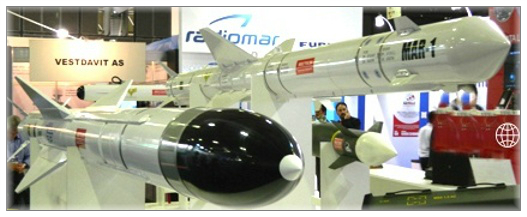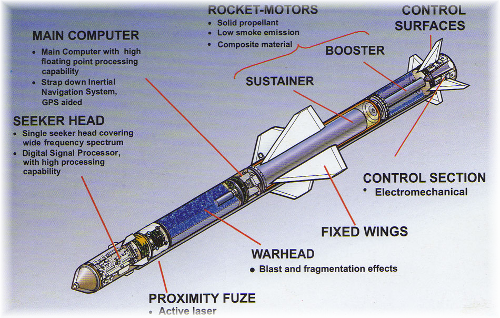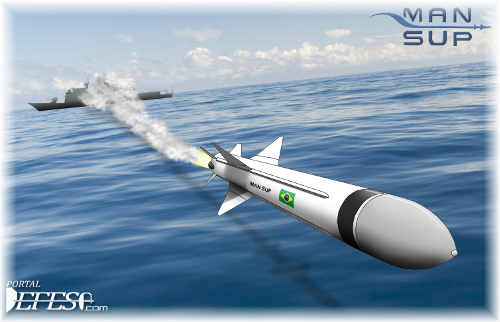about me
Electronic Eng. with strong background in Mathematics, I have worked in defense industry since 2003, in the fields of modeling, estimation, detection, tracking, and control. I am M.Sc. and almost a Dr. in signal processing. The opportunity to come to Germany happened before the promotion.
I am passionate about science, ideas, engineering and related stuff, but also philosophy. One might say that philosophy is “the science of things divine and human”… Ok, you won: the science again!
Bellow I list some of my activities in my carrier so far…
theory and algorithms:
- Navigation algorithms, including data fusion with auxiliary sensors, like barosensor or GPS, or even a barely idea about speed.
- Guidance of robots (missiles) with special interest on optimization of trajectory. This is specially interesting because the seeker performance might be dependent on the line of sight to the target. Therefore, it is a good idea to perform the guidance in a situation where the seeker performance is the best.
- Control of linear and nonlinear dynamic systems, with parameters identification.
- Multisource, Multitarget, Multisensor Information Processing and Data Fusion. This was the purpose of my doctorate. By the qualification, I presented an algorithm capable of fusing data from different nodes without any redundance (the most relevant issue in data fusion!) using the theory of Random Finite Sets.
- Stochastic Signal Processing. Wow! There should be a chapter here. One of the most recent challenges was to make the transfer alignment algorithm for a sea skimming missile launched from a “flexible” ship which could provide only a noisy gravity direction. Nice, isn’t it? But I have some nice works in other missile categories. For a infrared missile, how to classify targets from flares? And for a anti-radiation missile, how accurately describe a scene with different sources and jammers, deinterleave a bunch of received pulses, estimate a target-in-range, or triangulate the target during flight?

(downloaded from "http://www.militarypower.com.br/laad15_48.jpg" in 2016-10-01)
- Error modeling and propagation. Problems like this one might get some benefits from this theory: how to write and validate a consistent requirement where a sea skimming missile should not hit water?
- Radar theory (mainly to attack radars with anti-radiation missiles!).
- Wideband beamforming, with applications to radars, missiles and torpedos.
- Bearing only target localization, with estimation of line-of-sight derivative (useful for guidance).
- CFAR algorithms for detection before tracking processing with simultaneous parameter estimation. These algorithms were employed in at least 3 different missiles.
- Data clustering, with application to radar targets localization or machine learning.

(downloaded from "http://www.aereo.jor.br/wp-content/uploads//2009/04/mar-1-b1.jpg" in 2016-10-01)
simulation:
- Simulation of several different systems, from underwater to airborne, slow or fast, linear or not, with a broad range of tools, like real time OS or high-level algorithmic design tools (octave, modelica, matlab, for example).
- Specification, architecture and implementation of a hardware-in-the-loop system (HILS). After the completeness of the HILS, I replaced the hardware involved by another simulator to create a software-in-the-loop system (SILS). Here, the real bus communication was kept. With that, I implemented a simulator also for the bus, to create a local-SILS. This became a key tool for the debug process of the whole system, reducing its duration.
- Multibody theory and simulation. From the multibody equations, I developed an application to load a system description from a XML file, and to simulate it. This application could become part of a simulator of a missile seeker with gimbals. The mathematical core of this simulation was redesigned, the equations where rearranged and simplified, everything was implemented in C, and I got a real-time simulator using just a XML file as input. Very versatile.

(downloaded from "http://portaldefesa.com/home/wp-content/uploads/imagens/Leo/MANSUP/mansupvoando.jpg" in 2016-10-01)
work and tools:
- Software development in accordance to DO-178B. Though I have done the training in Washington DC, I have not used it in any particular project, so far …. :o)
- Currently, I fluently build my simulations in Modelica, C/C++, Octave (Matlab-like), but Python/Numpy is on the way!
- I played with some resources I had at home, like cellphone, laptop and desktop and build a cluster with them. I used Message Passing Interface (MPI) with Octave.
- These topics are daily used, as if they were inside my personal toolbox:
- Statistical concepts and tools,
- Algebra,
- Mixture of Gaussians, EM-algorithm, etc
- Support Vector Machine, Principal Component Analysis, and variations, Neural Networks, and others.
some more experience:
-
I have 4 Raspberries, and 1 Carambola. Did you get it?

-
I have worked in three countries so far: Brazil naturally, but also Germany (Munich, 2001) and USA (Seattle, also 2001). Currently, I live and work again in Germany (Hamburg).